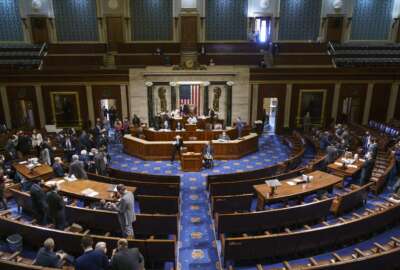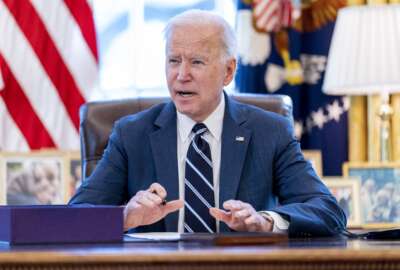
Another ‘peanut’ pay raise?
The idea that white collar (non-postal) feds will get get a 4.6% in 2023 is almost a done deal. And 5.1% isn’t out of the question. But will either amount be...
When they learned that the President wanted to give them a 9.1% raise, delegates to the convention of the largest federal union booed for five minutes. But that was then, this is now. And things change.
Or do they?
The hissing at the mention of a 9.1% raise came in 1980, a time of runaway inflation. Data used by Uncle Sam to determine what workers should get, based on private sector wage gains, showed rank-and-file feds were due at 13.49%. Just to catch up. In those days federal workers got pay raises on Oct. 1 (the start of the fiscal year).
The official pay raise announcement was made by then President Jimmy Carter. It was one of the largest increases proposed in history. And it fell flat with an audience he needed most: labor. He was about to kick off his campaign for reelection. His challenger was former movie star and California Governor Ronald Reagan. The rest, as they say, is history.
It’s highly unlikely that the “peanut pay raise,” as critics labeled the Carter plan, was the primary reason he was trounced by Reagan. There was the Iran hostage situation, among other things. But it probably contributed to the runaway electoral and popular vote victory Reagan scored. So is there a history lesson here?
While history doesn’t exactly repeat itself, sometimes, in times like now, there are a lot of similarities to the way things shape up. And shake out.
Inflation, which has been long dormant, is roaring. Getting worse with each monthly report. And the Ukraine war, which is driving much of it, has just started. Here at home potential voters — from farmers to air traffic controllers — are subjected to a relentless 24/7 news cycle which didn’t exist, for most, in the Carter years. And the round-the-clock woe-is-me news reports are frequently led by “price at the pump” which for many is their nerve center for inflation pain. And reminder that when oil prices spike — for whatever reason — so does everything else, except maybe salaries. President Biden, who got the support of every national federal and postal worker union, has proposed a 4.6% pay raise in January. That would be the highest in decades. Yet the sound you hear in major federal-employment centers — from New York and Washington to San Antonio and San Francisco — isn’t workers dancing in the street. Friends of feds in the House, led by Rep. Gerry Connolly (D-Va.) are pushing for a 5.1%. They say that data shows in order to catch up with their counterparts in industry, the raise should be more. And there are those devilish round-the-clock “price at the pump” reminders. The idea that white collar (non-postal) feds will get get a 4.6% in 2023 is almost a done deal. And 5.1% isn’t out of the question. But will either amount be enough, both realistically and emotionally? Or will this one also be perceived as another peanut pay raise?
Nearly Useless Factoid
The government of Thailand directly supports the proliferation of Thai restaurants around the world, as part of an effort known as “gastrodiplomacy.”
Source: Vice
Copyright © 2024 Federal News Network. All rights reserved. This website is not intended for users located within the European Economic Area.
Mike Causey is senior correspondent for Federal News Network and writes his daily Federal Report column on federal employees’ pay, benefits and retirement.
Follow @mcauseyWFED
Related Stories





